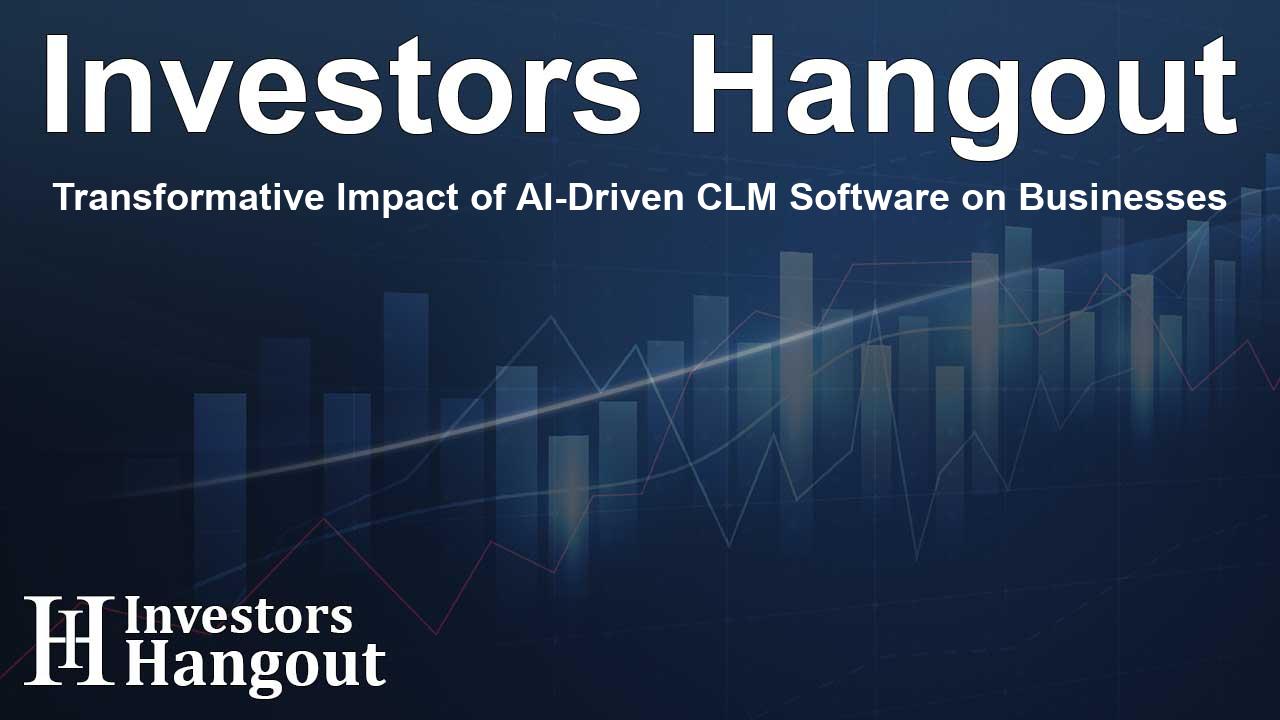Transformative Impact of AI-Driven CLM Software on Businesses

How AI Elevates Contract Management
Businesses move fast, and contracts need to keep up. AI-enabled Contract Life-Cycle Management (CLM) software brings order to the whole process—from first draft through negotiation, approvals, signature, and renewal. By reducing manual work and shining a light on obligations and risk, AI helps teams stay compliant, move quicker, and avoid unnecessary cost.
The Expanding Role of AI in CLM
Artificial intelligence is reshaping how contracts are created, reviewed, and governed. The Hackett Group’s Digital World Class Matrix™ for CLM takes a close look at this shift and lays out how organizations can use AI to strengthen sourcing, tighten compliance, and improve risk management. In short: smarter tools, clearer decisions, fewer surprises.
What the Market Signals Say
Momentum is building. Research points to 11% growth in the CLM market, and 28% of companies plan to pilot AI-driven CLM in the coming year. The Hackett Group’s analysis also underscores a practical point: to make these tools pay off, many organizations will need to adapt processes, data, and roles so the technology can do its best work.
Why the Numbers Matter for Large Enterprises
For companies with $5 billion to $10 billion in annual revenue, the business case is compelling. As outlined in the Digital World Class Matrix™ report, a mature CLM program can deliver a 45% efficiency gain in negotiations, cut contract cycle times by 35%, and reduce losses tied to noncompliance by a factor of five. Those aren’t marginal improvements; they change how legal, procurement, and business teams spend their time.
Strategic Payoffs of AI-Ready CLM
“Contract life-cycle management provides a significant opportunity for organizations to enhance value through streamlined processes and improved compliance,” says Chris Sawchuk of The Hackett Group. Choosing the right CLM platform—and implementing it with care—helps shorten cycles, surface risks earlier, and support better decisions across the business.
What Recent Studies Are Finding
Evidence from the CLM Digital World Class Matrix™ points to broad satisfaction and strong outcomes. About 89% of customers report they’re satisfied with their CLM solutions. Post-implementation, 81% of contracts are actively managed in the system, which signals that teams aren’t just buying software—they’re using it to run the work.
Speed, Visibility, and Hitting Business Targets
Organizations using AI-enhanced CLM report an average 35% improvement in contract completion times. Automation, guided workflows, and clearer views into status, risk, and milestones all contribute. The payoff extends beyond speed: roughly 80% of companies say they met their business improvement goals after adopting CLM and tuning their operating processes to match.
Beyond Basics: Capabilities Teams Now Expect
Traditional contract repositories and simple templates aren’t enough anymore. As Richard Gardner of The Hackett Group notes, teams are looking for AI-driven capabilities such as automated contract reviews, obligation tracking and management, and predictive analytics. These capabilities help spot issues early, keep commitments on track, and forecast where attention is needed next.
Setting Up for What’s Next
Insights from the CLM Digital World Class Matrix™ give procurement and legal leaders a clearer path forward. With a grounded view of needs and options, they can choose solutions that fit their operating model, reduce friction between teams, and tap into the strengths of next-generation CLM. The result is a system that not only stores contracts but actively supports how work gets done.
Frequently Asked Questions
What is AI-enabled Contract Life-Cycle Management (CLM)?
It’s software that uses AI to manage contracts end to end—drafting, negotiating, approving, storing, tracking obligations, and renewing—so the right people see the right terms at the right time.
What are the practical benefits of AI-driven CLM?
You can expect faster cycle times, fewer manual handoffs, stronger compliance, clearer visibility into risks and obligations, and meaningful cost avoidance—especially at enterprise scale.
How does AI actually improve contract work day to day?
AI speeds reviews, flags risky clauses, routes tasks through the right workflow, and keeps status and milestones visible. That cuts rework and helps teams focus on the decisions that matter.
Which trends are shaping the future of CLM?
Growing investment in AI features, deeper analytics, and a sharper focus on compliance and risk are steering roadmaps. The direction is toward tools that guide work, not just record it.
How should I choose a CLM solution?
Start with your use cases and data. Then look at expert assessments like The Hackett Group’s Digital World Class Matrix™, and weigh each provider’s AI and automation strengths against your needs.
About The Author
Contact Owen Jenkins privately here. Or send an email with ATTN: Owen Jenkins as the subject to contact@investorshangout.com.
About Investors Hangout
Investors Hangout is a leading online stock forum for financial discussion and learning, offering a wide range of free tools and resources. It draws in traders of all levels, who exchange market knowledge, investigate trading tactics, and keep an eye on industry developments in real time. Featuring financial articles, stock message boards, quotes, charts, company profiles, and live news updates. Through cooperative learning and a wealth of informational resources, it helps users from novices creating their first portfolios to experts honing their techniques. Join Investors Hangout today: https://investorshangout.com/
The content of this article is based on factual, publicly available information and does not represent legal, financial, or investment advice. Investors Hangout does not offer financial advice, and the author is not a licensed financial advisor. Consult a qualified advisor before making any financial or investment decisions based on this article. This article should not be considered advice to purchase, sell, or hold any securities or other investments. If any of the material provided here is inaccurate, please contact us for corrections.
